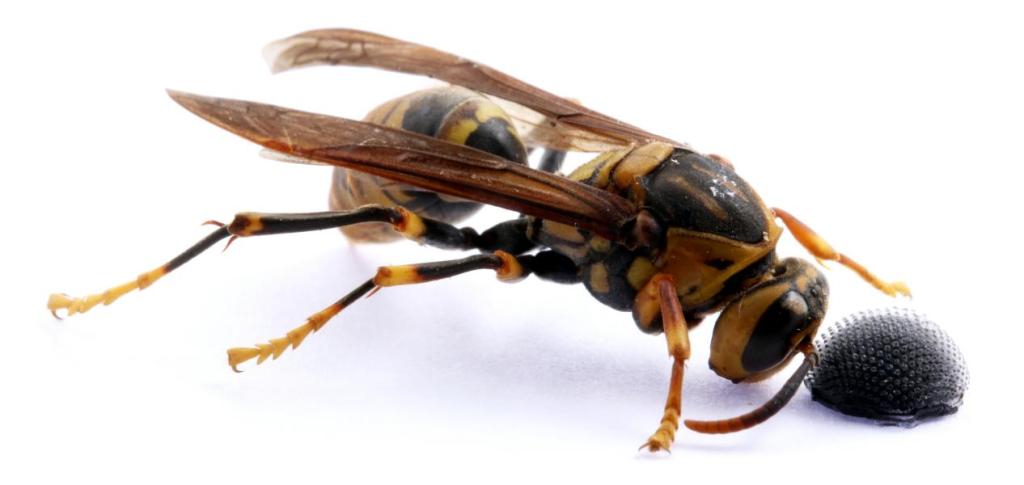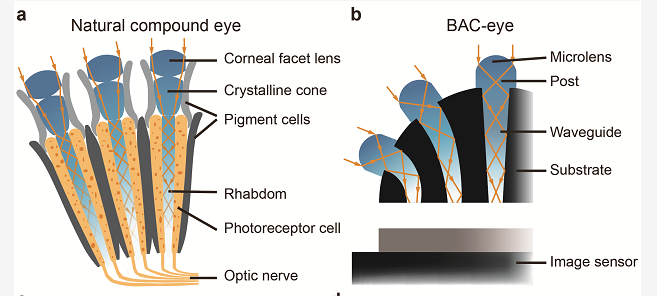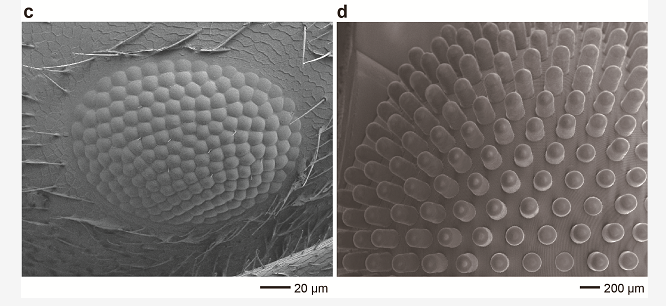November 19, 2021
| By Zhang Liu | Copyedited by William, Zhang Liu
After half a billion years of evolution, arthropods have developed sophisticated compound eyes with extraordinary visual capabilities that have inspired the development of artificial compound eyes. However, the limited 2D nature of most traditional fabrication techniques makes it challenging to directly replicate these natural systems.

On November 9th, Ultra-precision Optical Team led by Academician Zhuang Songlin, and Professor Zhang Dawei worked together with Duke University and University of Dayton, proposed the technology of the biomimetic apposition compound eye fabricated using microfluidic-assisted 3D printing, jointly worked out the problem of compound eyes republication and application. The related paper entitled “biomimetic apposition compound eye fabricated using microfluidic-assisted 3D printing” was published in NATURE COMMUNICATIONS. Professor Dai Bo and master's student Zhang Liang from USST and Professor Zhao Chenglong from University of Dayton were the first authors; USST Professor Zhang Dawei and Duke Professor Tony Jun Huang were the corresponding authors.
The research team presents a biomimetic apposition compound eye fabricated using a microfluidic-assisted 3D-printing technique. Each microlens is connected to the bottom planar surface of the eye via intracorporal, zero-crosstalk refractive-index-matched waveguides to mimic the rhabdoms of a natural eye. Full-colour wide-angle panoramic views and position tracking of a point source are realized by placing the fabricated eye directly on top of a commercial imaging sensor.


On a fundamental level, the BAC-eye may also be useful as a biomimetic model for natural compound eyes, allowing scientists to study and test the mechanisms behind insect vision and perception. In addition, due to the miniaturized design and scalability of the BAC-eye, it could be adopted by fields such as micro-robotics where it can be utilized for applications including 3D endoscopic vision in industrial and medical inspections; the BAC-eye may also be useful for machine vision for functional human–robot interactions, and improving 3D displays.
Link to the paper: https://www.nature.com/articles/s41467-021-26606-z


